
Look What Happened When Lyon Got a Fresh Coat of Paint
Scores of enormous murals rehabilitated the French city’s image and started a mesmerizing street-art trend.
For most of the 20th century, Lyon, France, was known as “la belle endormie,” “the beautiful, sleeping woman.” The potential was there: the city sits at the confluence of two rivers with two opposing hills, one topped with a basilica, the other home to a thriving silk-weaving industry. But Lyon’s beauty was hidden in thick layers of smog and an intricate web of ring roads and tunnels. France’s Sleeping Beauty was known for having some of the worst pollution and congestion in the country, rather than for its aesthetic appeal.
But the city’s bad reputation was nothing that a fresh coat of paint couldn’t rectify.
The region’s renaissance began with a mural of that name. In 1982, a new association of artists painted “La Renaissance” on the exterior of a theatre in the Lyon suburb of Oullins. Oullins had been home to the country’s largest locomotive factories in the mid-1800s, but when the factories started to close in the mid-20th century the city fell on hard times, and struggling residents worried the city had lost its soul. Even its new theatre building was a nondescript grey concrete edifice as unappealing as the mass of old factories in the quartier. But the mural was a vibrant promise: a train in flames, broken in two with a screaming newborn emerging from the ruins. The suburb of Oullins, the artists were saying, was getting a new lease of life.
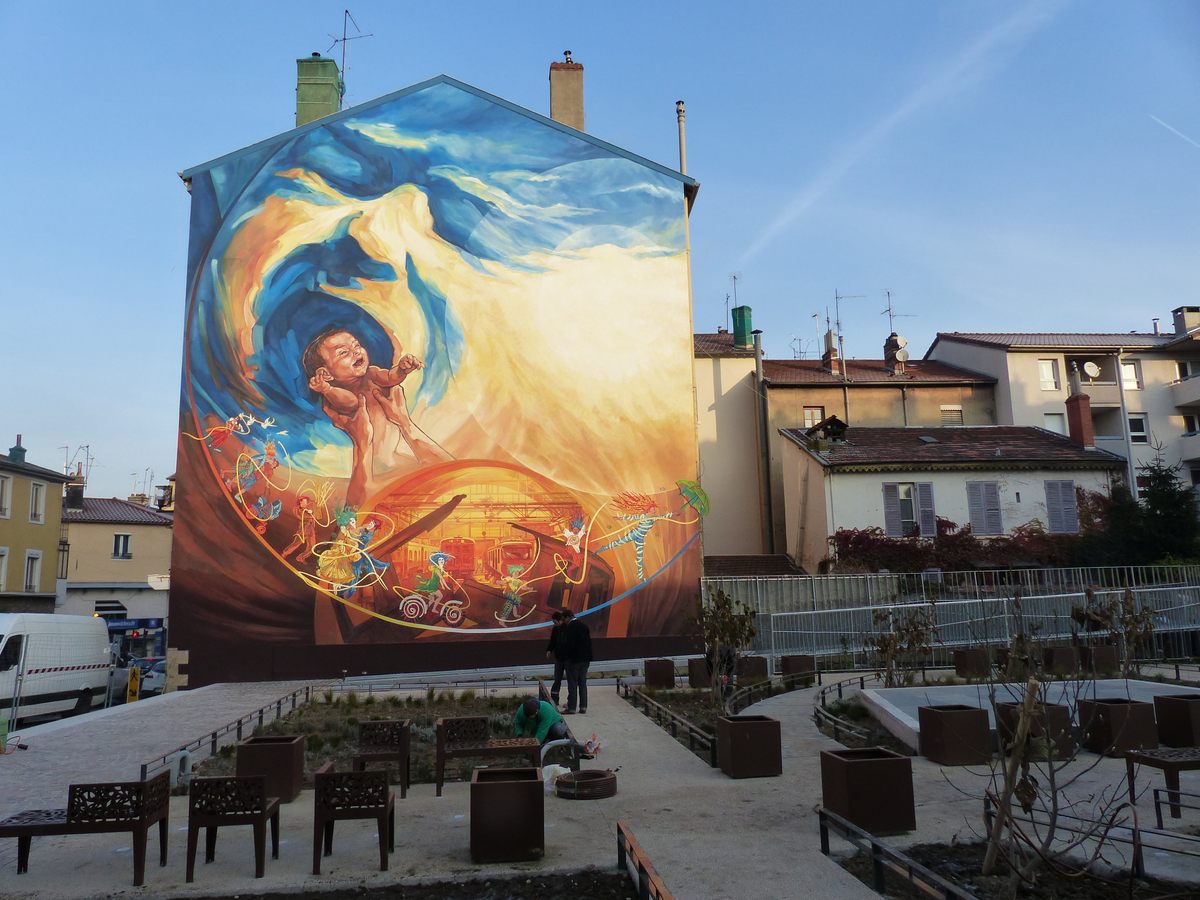
The artist collective that is now known as CitéCréation wanted the region’s residents to feel proud of their hometown again. And they believed that art should be accessible to everyone, not just those who could afford it, so they turned Lyon and its suburbs into an open-air gallery. Forty years after that first mural, there are now more than 150 in the metropolis, each reflecting the history of its particular neighborhood.
Croix-Rousse is Lyon’s former silk-weaving district. Often referred to as “workers’ hill,” it had been the beating heart of the city in the early 1800s, full of noisy ateliers where silk weavers pedaled their machines to spin fabric. In 1986, CitéCréation chose the previously thriving neighborhood as the site of another mural—its first trompe l’œil, an artistic technique which was typically seen only in art galleries.

“Le Mur des Canuts” (“The Wall of the Silk Weavers”) was the largest optical illusion in Europe when it was created. The seemingly 3D image transformed a virtually windowless wall into a mirror of Croix-Rousse’s higgledy-piggledy streets, depicting a silk weaver’s workshop, city balconies, and even a local branch of a Banque Populaire. The artists used a layering technique, painting the background first and building on the foreground using light and shadows to create the realistic effect.
The trompe l’œil style of street art quickly became synonymous with Lyon, which is now home to 10 building-sized optical illusions and many other murals that incorporate the technique in parts. In Lyon’s 1st arrondissement, “La Fresque des Lyonnais” shows famous city residents such as Antoine de Saint-Exupéry, author of The Little Prince, and the Lumière brothers, pioneers of cinematography, converging on balconies above bouchons, traditional Lyonnais restaurants. In the same arrondissement, “La Bibliothèque de la Cité” (“The City Library”) displays a window full of painted books by authors from the region. In the commune of Villeurbanne, in the east of the city, “Le Théâtre des Charpennes” shows a gilded stage richly draped with red curtains, the painted cast acting out a scene from 18th-century Lyonnais city life.

CitéCréation’s process for creating a mural isn’t quick. While many street artists produce a piece in a few days, or even overnight, the sheer scale of CitéCréation’s murals and number of people involved, from community members to artists, means that the average time between choosing a wall to paint and the work coming to fruition is two years—18 months to get permits, work with residents, and create a final sketch and six months to do the actual painting.
“When we finish a piece of art, it becomes the property of the public, which makes it so important that they get the final say.” says Halim Bensaïd, CitéCréation’s director. “We want the art to reflect them and their history.”
Halim says choosing artists is like casting a film. In Lyon, CitéCréation has a core team of 15, and a pool of another 80 artists that it works with, about 80 percent of them women. “We choose five to 10 artists for their specialisms,” Halim says. “Are they great at painting faces, or at architecture? You can’t carve a fresco up into different sections because each artist has a distinctive style so it would look disjointed—another reason why painting a mural is such a lengthy, collaborative effort.”

The group’s efforts to bring about social change through art moved slowly, too; the Lyonnais public didn’t always take much interest in CitéCréation’s projects.
“At the turn of the millennium, everyone was obsessed with things being ‘new’,” says Halim. “New technology, modern art. Frescoes that showed scenes from history weren’t of interest to them. This last decade we’ve seen renewed interest. People want to rediscover their patrimony.”
More recently, when CitéCréation asked local officials about the murals’ impact on the city, deputy mayor Gilles Bruna said that they “enhance the residents’ pride and their sense of belonging to this town.” Gérard Collomb, who was mayor of Lyon for 19 of the last 20 years, noted that the artwork had also begun to attract tourists. “The painted walls have become one of the main attractions for our visitors,” he said.
CitéCréation has now evolved into a social enterprise. As the project had grown, it expanded the work that revitalized Lyon’s neighborhoods all over the globe, with trompe l’œil and other styles of murals appearing as far away as Shanghai, Moscow, and Québec. In Berlin, the organization painted a mural on a public housing project.

“The owner needed to insulate the building,” says Halim. “Insulation is ugly, it makes all buildings look uniform. So we took inspiration from Michelangelo’s fresco on the ceiling of the Sistine Chapel, and what countless mural artists have done in the past. When there isn’t enough money to use a prettier material, you paint it.”
The building’s residents were elderly, but self-sufficient. When consulted, they told Halim and the team that they wanted to see color and hear children. CitéCréation created “La Volière” (“The Aviary”), a flock of 150 brightly painted birds. Now children from nearby schools come on trips to study local birdlife, and the residents can hear their laughter. It was such a success that they have continued to paint public housing in Lyon, elsewhere in Berlin, and in other cities.
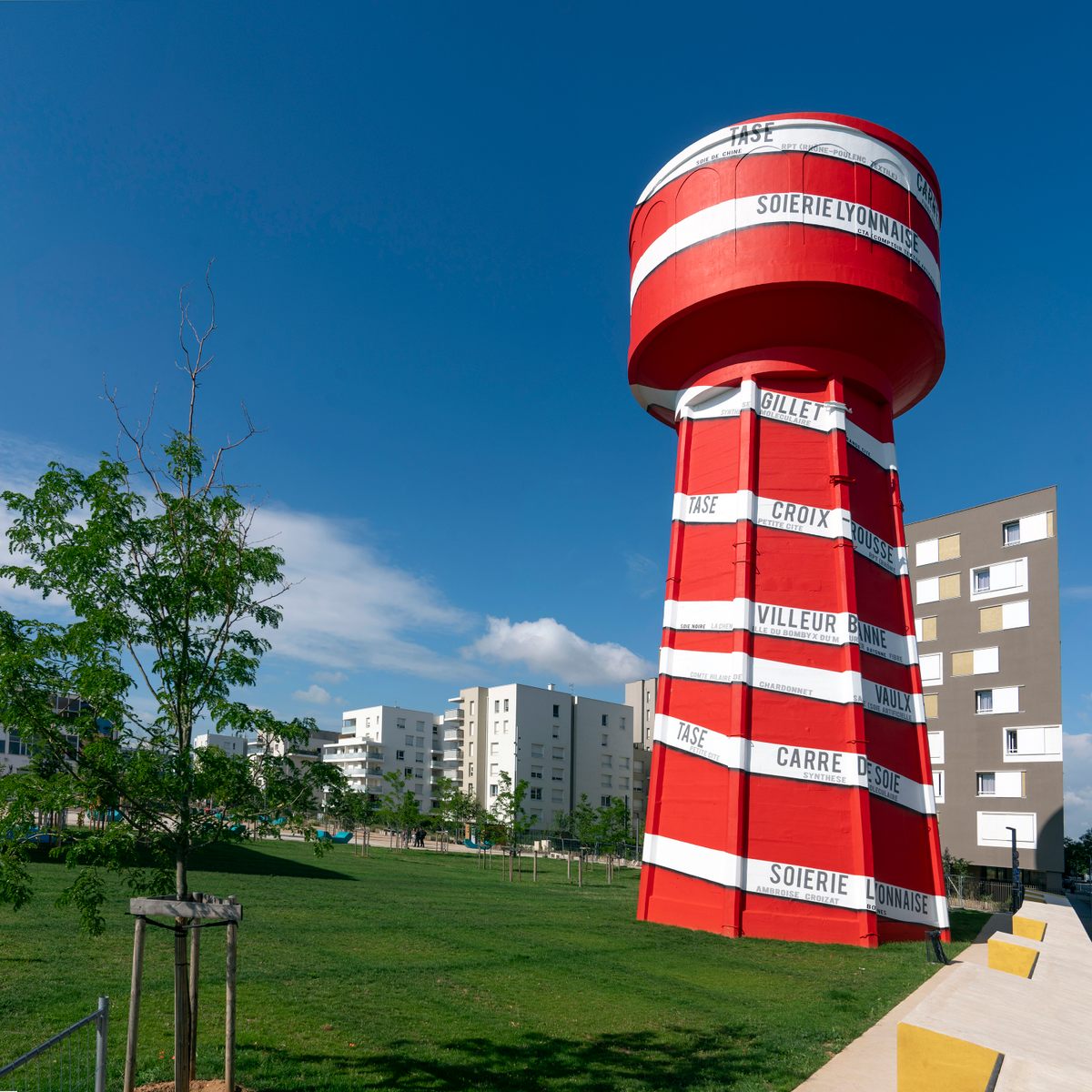
As Lyon grows, CitéCréation continues to transform old factories, ateliers, and apartment blocks with art. “My favorite fresco is always the one that we’re working on next,” Halim says, describing the organization’s upcoming projects.
Vaulx-en-Velin La Soie is the latest quartier of Lyon to get a facelift. What was a wasteland of disused silk factories is beginning to burst with color. An old water tower has been repainted lipstick red and white to represent a silk bobbin and decorated with the names of the city’s former factories. “La Bobine de Soie” has become the most iconic landmark in a largely monochrome quartier, simultaneously a reminder of the industrial days and a bold beacon of progress.
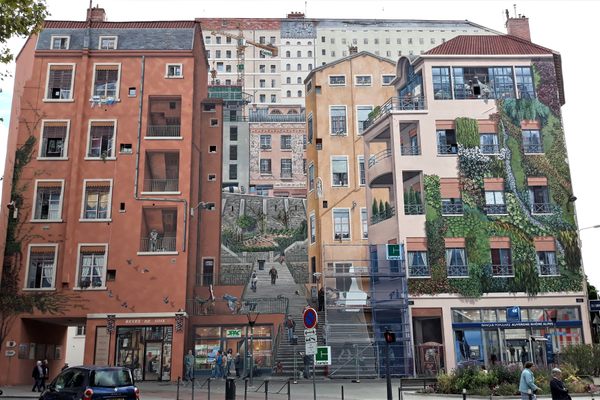



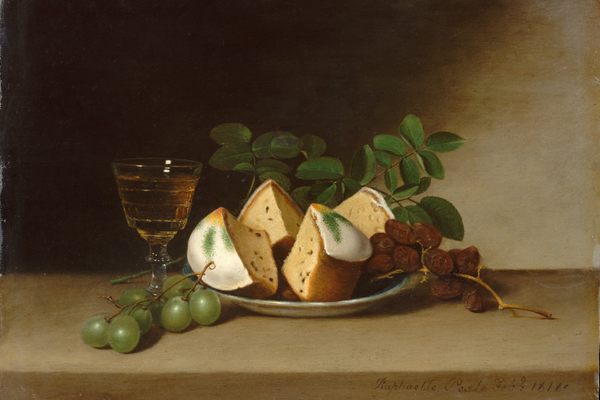


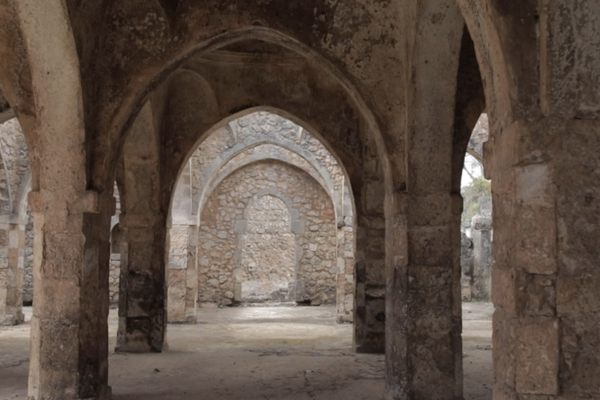




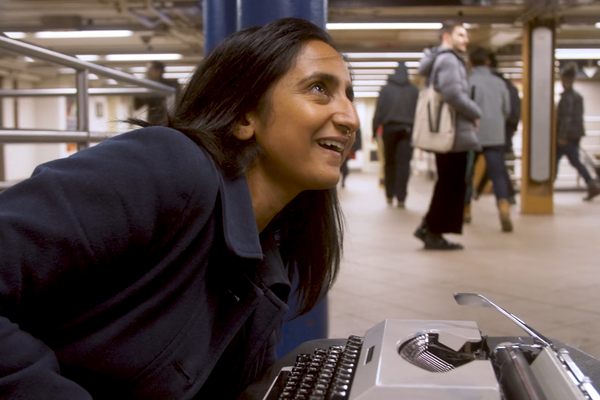


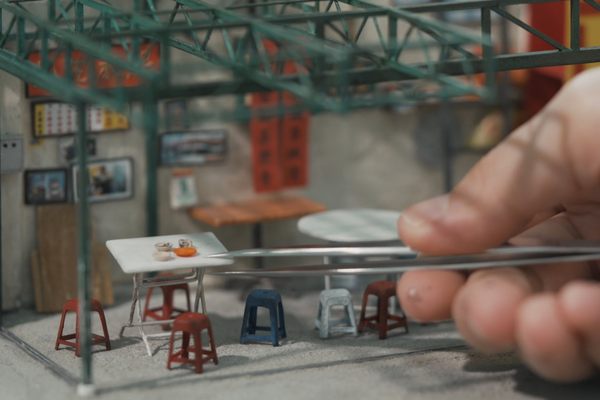



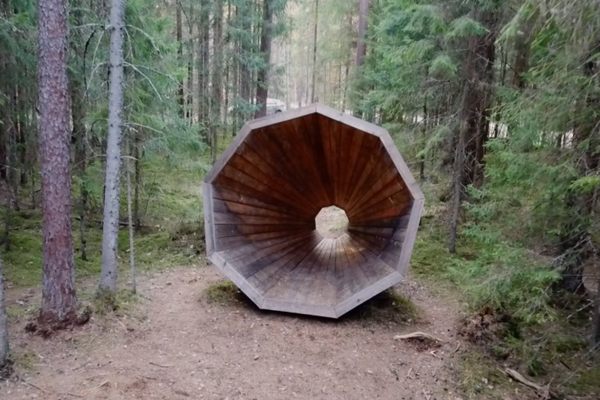


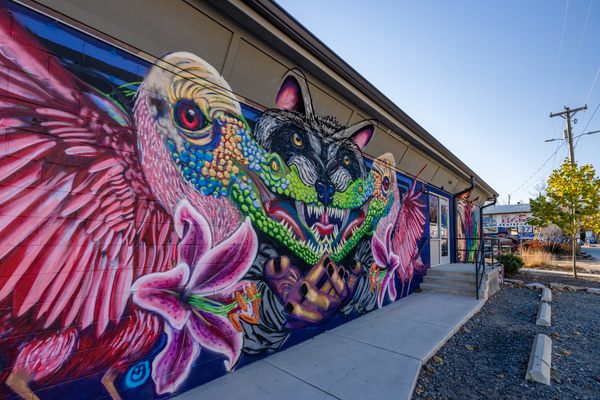
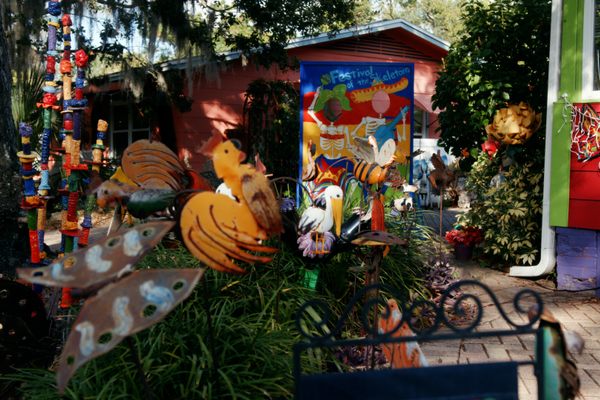




Follow us on Twitter to get the latest on the world's hidden wonders.
Like us on Facebook to get the latest on the world's hidden wonders.
Follow us on Twitter Like us on Facebook